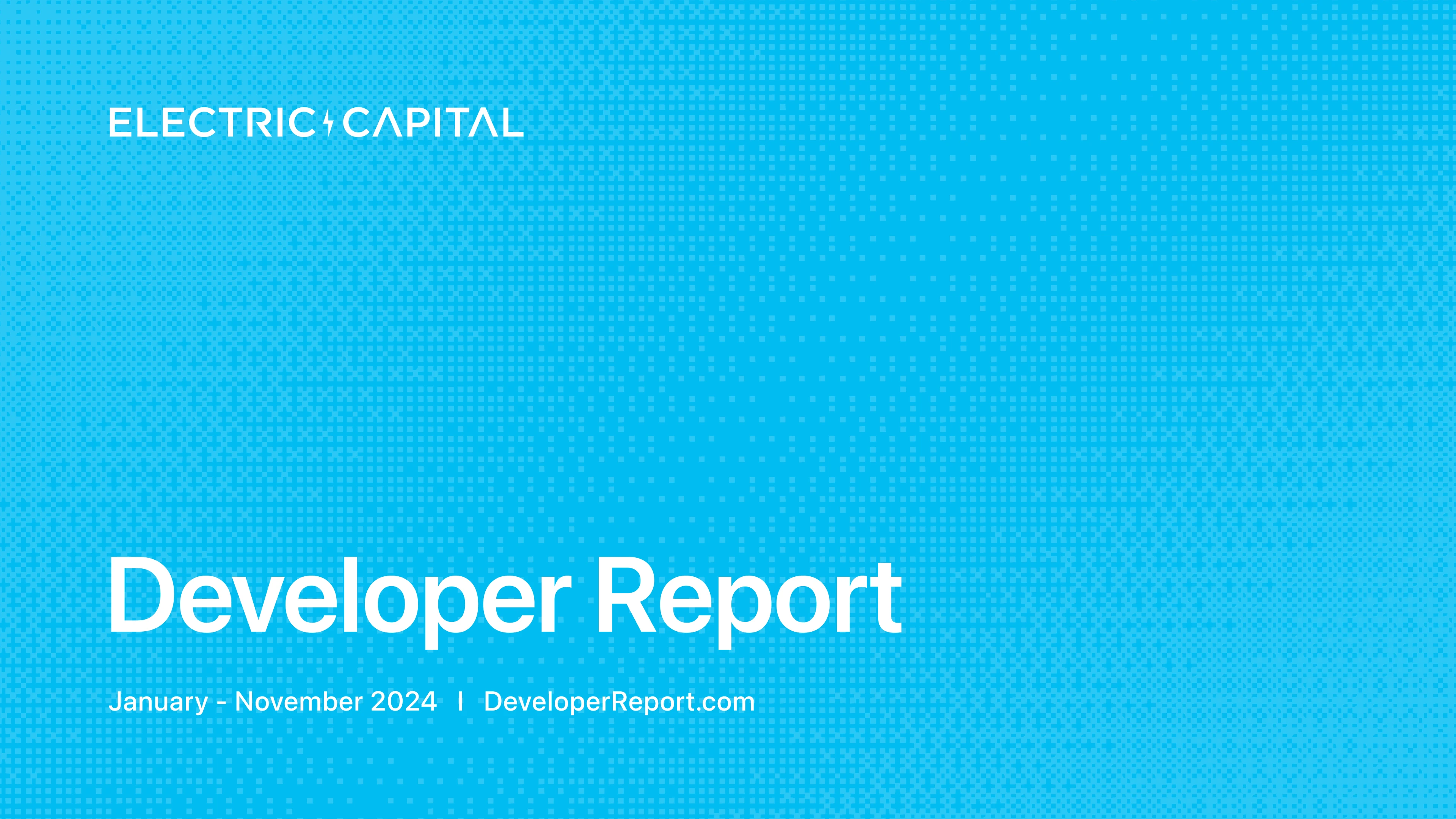Just received a $7 million seed round financing, understand the Bitcoin native application platform Arch in one article.
Arch is a decentralized execution layer focused on enhancing the programmability of Bitcoin. The network is currently in the testing phase and is expected to go live on the mainnet in a few weeks.
Author: Vishal Kankani, Head of Investment Team at Multicoin Capital
Translation: Golden Finance xiaozou
On May 9, 2024, Multicoin announced leading a $7 million seed round investment in Arch, a Bitcoin-native application platform unlocking the potential of decentralized finance (DeFi) on the world's most valuable blockchain, Bitcoin, without the need for bridging. Other participants in this round of funding include OKX Ventures, Big Brain Holdings, Portal Ventures, CMS Holdings, Tangent, and others.
For nearly a decade, Bitcoin has operated as digital gold. While discussions about enhanced smart contract functionality took place over a decade ago, these efforts largely went unnoticed. Part of the reason was that a significant portion of the Bitcoin community believed that weighing the corresponding pros and cons might jeopardize Bitcoin's ultimate mission of becoming the largest non-sovereign currency.
At that time, the prevailing view in the Bitcoin community was to abandon all programmability and innovations related to other chains' extensions to maximize potential without sacrificing the ultimate vision of a non-sovereign currency. The emergence of Ethereum and other smart contract platforms capitalized on this opportunity.
Smart contract platforms have been around for a decade. Some smart contract primitives, such as decentralized exchanges, lending markets, and stablecoins, have found their product-market fit. They are considered fundamental components of well-functioning blockchain ecosystems.
Prior to the Taproot upgrade in November 2021, Bitcoin's smart contract capabilities were very limited. The Taproot upgrade, by increasing the witness field space to about 4MB, made it easier for developers to write complex script functionalities. This enabled developers to write scripts for:
- Atomic swap transactions
- Multi-signature wallets
- Conditional payments
Subsequently, in July 2022, Casey Rodarmor introduced the "Ordinal Theory," a satoshi numbering scheme that allows tracking and transferring individual satoshis, unlocking the ability for users to directly "inscribe" any data into Bitcoin transactions, including images, text, games, etc., thereby unlocking full-chain NFTs on Bitcoin. These NFTs can be more than just JPEGs or songs; they can also be proofs of state from other chains.
The impact of the Taproot upgrade and Ordinal Theory has been significant, and today, developers are actively experimenting on a large scale with Bitcoin.
1. Current State of Bitcoin Development
At the time of writing this article, over 50 teams are conducting various research projects—rollups, drive chains, side chains, etc., to expand Bitcoin and make it more programmable. Most of these projects refer to themselves as "Bitcoin Layer 2," which is a broad term in some cases. Some projects are currently available, while others are still working towards breakthroughs in the future, such as BitVM, OP_CAT, etc.
In this field, each team has a distinct set of design trade-offs. Several key design variables include:
- Custodial model
- Programmability
- Scalability
We believe that in the short term, the first two points are the correct trade-offs:
- Building natively on Bitcoin—supporting interaction with DeFi without additional trust assumptions outside of Bitcoin.
- Focus on enhancing Bitcoin's programmability in a self-custodial model.
A typical bitcoiner should be a security fanatic. When it comes to "Not your keys, not your coins," Bitcoin users are the most paranoid users on this planet. It should not be expected that Bitcoin holders will shift their BTC to a new multi-signature, abandon even a hint of self-custody, or worse, take on bridging risks. We firmly believe this because WBTC and tBTC have been around for years, yet they account for less than 1% of the total Bitcoin supply. There simply isn't enough market demand to bear the bridging/centralization risks to achieve programmability benefits.
Additionally, we see that most TVL on Ethereum resides on L1 rather than on L2 solutions like Base, Arbitrum, or Optimism.
To truly unlock DeFi on Bitcoin, developers need to come to the users' stronghold—Bitcoin L1.
Why focus more on BTC programmability than scalability?
As a developer, if all you want is to create a fast blockchain, there are many alternatives like Solana with a thriving developer ecosystem and more mature market infrastructure. Even with the most lenient view of Bitcoin's current technology, we are not ready to achieve high-throughput chains without sacrificing custody, as mentioned earlier, which is impossible for most bitcoiners. In this regard, most developers building on Bitcoin are "aligned with Bitcoin," wanting to build the most secure blockchain in the world, rather than masquerading multi-signatures as L2. Within Bitcoin's current technical capabilities, we believe the correct sequence of operations is to prioritize programmability and further push forward speed and scale along the roadmap.
2. Bitcoin Native Applications on Arch
Arch is building the first Bitcoin-native application platform. The Arch network is currently in the testing phase and is expected to go live on the mainnet in a few weeks.
Arch is a decentralized execution layer focused on enhancing Bitcoin's programmability, making several interesting trade-offs in Bitcoin expression design:
- It acknowledges that most Bitcoin holders will not switch from custody to multi-signature (almost all Bitcoin L2s are trusted multi-sigs).
- The core architecture allows takers of spot trades to interact with applications without assuming new trust; however, makers will face additional trust assumptions (makers are typically risk-taking professionals explicitly, rather than principled users holding Bitcoin for self-sovereignty reasons).
Technically, Arch introduces smart contract-like functionality to Bitcoin Layer 1 through a complex architecture that leverages a decentralized network of validator nodes and a specially built zero-knowledge virtual machine (zkVM)—ArchVM. Here is a general lifecycle of transactions (tech-related) on the Arch network:
- ZKVM: The core of the Arch network is zero-knowledge proofs (ZK proofs) that verify transactions, ensuring secure application execution. ZKVM is a dedicated virtual machine that executes applications and generates encrypted proofs of correctness. It is supported by Risc0.
- Decentralized validator network: The generated ZK proofs are subsequently verified by Arch's decentralized validator node network. This network plays a crucial role in maintaining the platform's integrity and security. By relying on a decentralized architecture, Arch aims to ensure that the verification process is not only secure but also resistant to censorship and central point failures.
- Integration with Bitcoin Layer 1: Once the ZK proofs are verified, the validator network can sign unsigned transactions. These transactions, including state updates and asset transfers determined by application logic, ultimately flow back to Bitcoin. This final step completes the execution process, with all transactions and state updates directly confirmed on the Bitcoin blockchain.
While other projects position themselves as Layer 2, we believe Arch is clearly Bitcoin-native. Arch uniquely positions itself as a Bitcoin-native application platform, running directly on Bitcoin Layer 1. By directly operating on Bitcoin's main layer, Arch eliminates the complexity and inefficiency that L2 solutions typically face, allowing users to directly benefit from Bitcoin's security and liquidity while exploring the scalability that Arch brings.
3. Development on Arch
In the short term, DeFi applications (such as lending, decentralized exchanges, and the Ordinal market) are evidently buildable on Arch. It would be fantastic if asset exchanges, collateralized lending, and earning BTC returns without the need for trust could be achieved.
Moreover, it would be great if high-end collectibles could reside entirely on the most valuable blockchain known to humanity (Bitcoin). We anticipate that the world's most valuable digital collectibles will reside on Bitcoin, marking a significant technological breakthrough and ushering in the era of internet-native finance. Many Ordinals collectors clearly value this.
Several projects in the Bitcoin ecosystem have begun migrating to Arch. Recently, the Bitcoin lending market Liquidum started integrating liquidity pools, utilizing Arch to support instant liquidity loans and homogenous token pools—something that Bitcoin, or even Discrete Log Contracts (DLCs), cannot natively provide. At the time of writing this article, over 20 projects are developing on Arch's devnet, involving stablecoins, decentralized exchanges, lending markets, etc. With increasing excitement around Bitcoin, the Arch Foundation plans to support ecosystem development through upcoming hackathons and fund a series of projects.
4. The Next Chapter of Bitcoin
With the support of the Taproot upgrade and Ordinal Theory, we are witnessing unprecedented interest in the Bitcoin ecosystem. For the first time in 15 years, people are actively striving to make Bitcoin more programmable without compromising its non-sovereign currency vision.
Arch is the first Bitcoin-native application platform to unlock DeFi on the world's most valuable blockchain, Bitcoin, without bridging. The emergence of Arch directly operating on Bitcoin Layer 1 eliminates the complexity and inefficiency typically faced by L2 solutions, allowing users to directly benefit from Bitcoin's security and liquidity while exploring the scalability that Arch brings.
The community's direct response is that they hope to leverage the underlying security and liquidity of Bitcoin to enable more complex applications, similar to what is seen on programmable chains like Ethereum and Solana. By providing a Bitcoin programmability platform, Arch aligns with the vision and principles of the Bitcoin community, offering an innovative approach that enhances Bitcoin utility while maintaining its integrity.
Arch invites people to reexamine the world's largest and most secure blockchain, bringing advancements and innovations from other blockchains back to Bitcoin.
Disclaimer: The content of this article solely reflects the author's opinion and does not represent the platform in any capacity. This article is not intended to serve as a reference for making investment decisions.
You may also like
2024 Crypto Developer Report SummaryExecutive Summary

Digital Veblen Goods and Fees

Musings on the Future of Actually Smart Wallets

Bitwise CIO: Биткойн может достичь $200 000 без краха доллара

